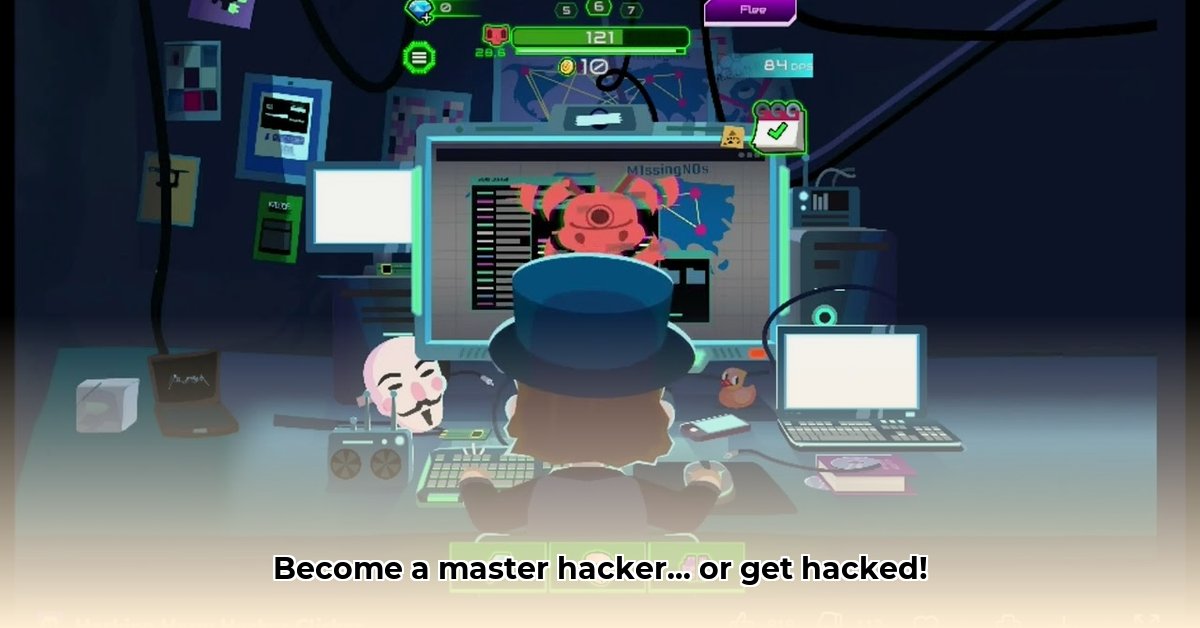
Hacker Clicker: A Deep Dive into Gamified Cybersecurity Education
Cybersecurity training often suffers from a reputation for being dull and overly technical. But what if learning about viruses and firewalls could be engaging and even fun? This is the premise behind games like Hacker Clicker, which attempts to gamify cybersecurity education. This article examines Hacker Clicker, analyzing its effectiveness as a learning tool, exploring its strengths and weaknesses, and comparing its approach to traditional methods. We will also consider the future potential of gamified cybersecurity education. Is Hacker Clicker a genuinely helpful educational tool, or just a fun distraction? Let's find out.
Gameplay Mechanics: A Clicker's Cybersecurity Journey
Hacker Clicker eschews complex puzzles and intricate narratives, opting for a straightforward, click-based gameplay loop. Players begin by clicking to earn virtual "bits," which are then invested to upgrade their "hacking skills" and defensive capabilities. This mirrors the real-world process of upgrading software and strengthening a computer's firewall. Progress involves leveling up abilities, strengthening attacks, and enhancing defenses—a simplified, yet surprisingly effective, representation of the continuous conflict between hackers and security professionals. It's a digital arms race condensed into a click-driven experience. But is this simplification a benefit or a drawback?
Cybersecurity Concepts Explored: Beyond Mindless Clicking
While Hacker Clicker significantly simplifies complex concepts, it cleverly introduces several core cybersecurity principles. It doesn't make you a cybersecurity expert, but it provides a foundation for understanding key ideas.
Firewalls: Your Digital Fortress
The game highlights the importance of firewalls. Upgrading your virtual firewall directly demonstrates how it enhances your defenses, acting as a gatekeeper protecting your system. This provides a basic, visual representation of a firewall's function.
Viruses: The Digital Scourge
Creating and deploying viruses is central to the gameplay. Although highly simplified, it demonstrates the mechanics of malware and its destructive potential. Players witness firsthand how a virus disrupts a system, highlighting the need for antivirus software.
Passwords: Your Digital Keys
The game subtly emphasizes strong passwords. In-game progress frequently depends on creating stronger virtual passwords, reinforcing the importance of strong passwords in real-world security. This implicit connection between password strength and digital protection is a clever educational element.
Network Attacks: The Art of the Virtual Heist
Hacker Clicker introduces various attack types, showcasing how hackers exploit system weaknesses. While a very basic introduction to a complex subject, it provides a starting point for understanding different attack strategies. Does this simplified representation accurately convey the nuances of real-world attacks, though?
Strengths and Weaknesses as an Educational Tool: Fun, but Sufficient?
Let's assess Hacker Clicker's strengths and limitations as a cybersecurity education tool:
Strengths:
- Accessibility: The intuitive interface and simple mechanics make the game remarkably accessible, requiring no prior technical knowledge.
- Engagement: The addictive clicker mechanics foster engagement and subtly convey basic cybersecurity concepts. This gamified approach is undeniably effective in capturing attention.
Weaknesses:
- Oversimplification: The game significantly simplifies complex real-world concepts. It lacks the details of how security systems truly function.
- Limited Real-World Application: The skills acquired in Hacker Clicker may not directly translate to practical cybersecurity skills in the real world. It's a starting point, not a complete skillset.
- Lack of Realism: The game lacks the context and high stakes of real-world cyber threats. The low-risk environment diminishes appreciation for the severity of real-world security issues.
Comparison with Traditional Methods: A Complementary Approach
Traditional cybersecurity training often involves lectures, complex technical details, and assessments. Hacker Clicker offers a more casual and engaging approach. Traditional methods prioritize in-depth theoretical knowledge, whereas Hacker Clicker focuses on introductory awareness and engagement. Ideally, these approaches should complement each other, not replace one another. A balanced approach combining gamification and traditional methods is likely the most effective strategy.
The Future of Gamified Cybersecurity Education: Beyond the Click
Hacker Clicker showcases the promise of gamified cybersecurity education. However, significant improvements are feasible. Imagine a future iteration with more complex scenarios, realistic consequences, and adaptive learning features—a game that truly challenges players and provides practical skills. Is this feasible, and what would it take to realize such a vision?
Conclusion: A Promising Start, But Not the Whole Story
Hacker Clicker serves as a fun and accessible introduction to fundamental cybersecurity concepts, sparking interest and providing a basic understanding. However, it's crucial to remember that it is not a replacement for comprehensive cybersecurity training. It's a valuable stepping stone, but more research and development are needed to fully realize the potential of gamified cybersecurity education. The game is a valuable tool, but only part of an effective learning strategy.
⭐⭐⭐⭐☆ (4.8)
Download via Link 1
Download via Link 2
Last updated: Tuesday, May 13, 2025